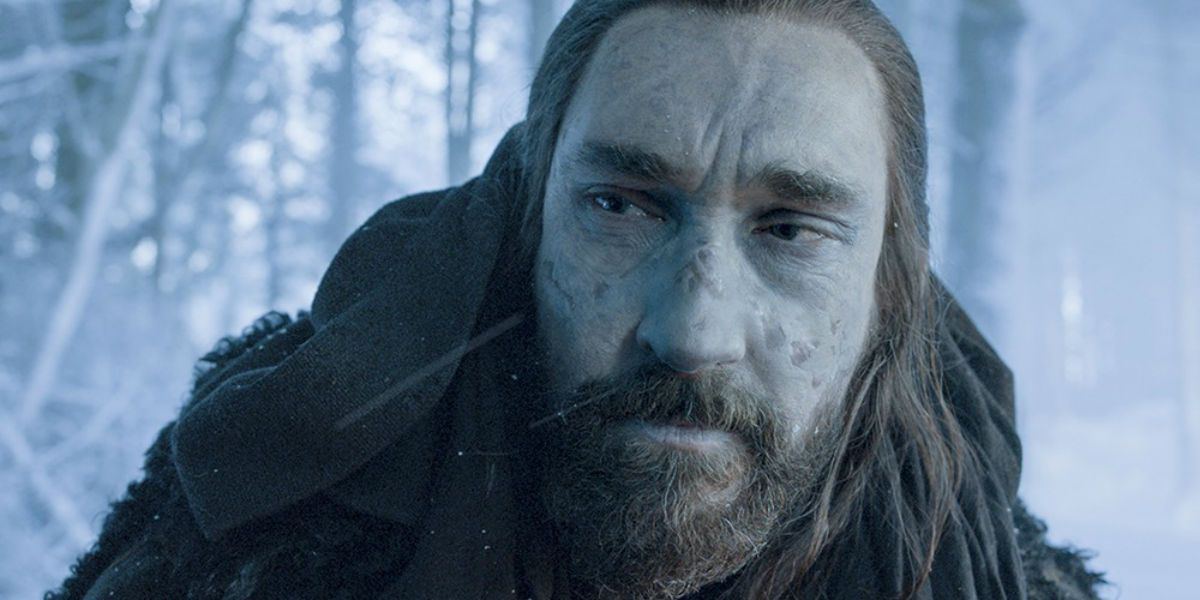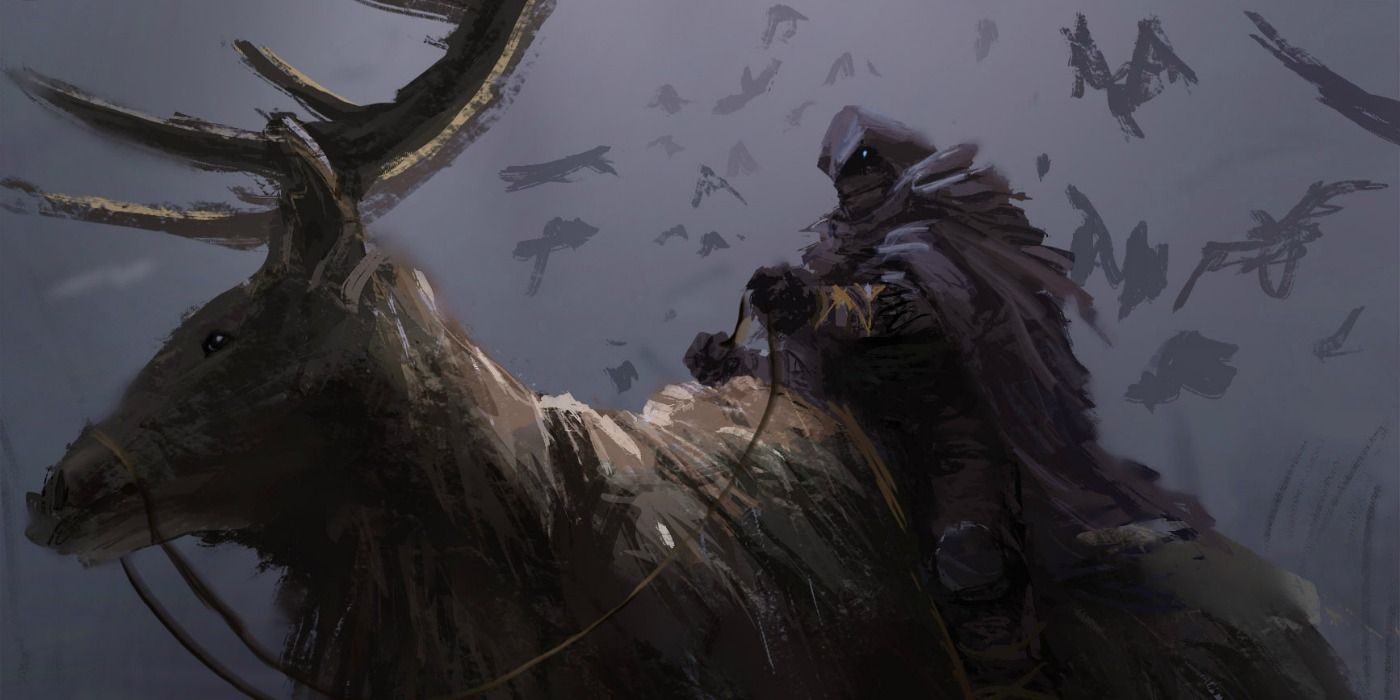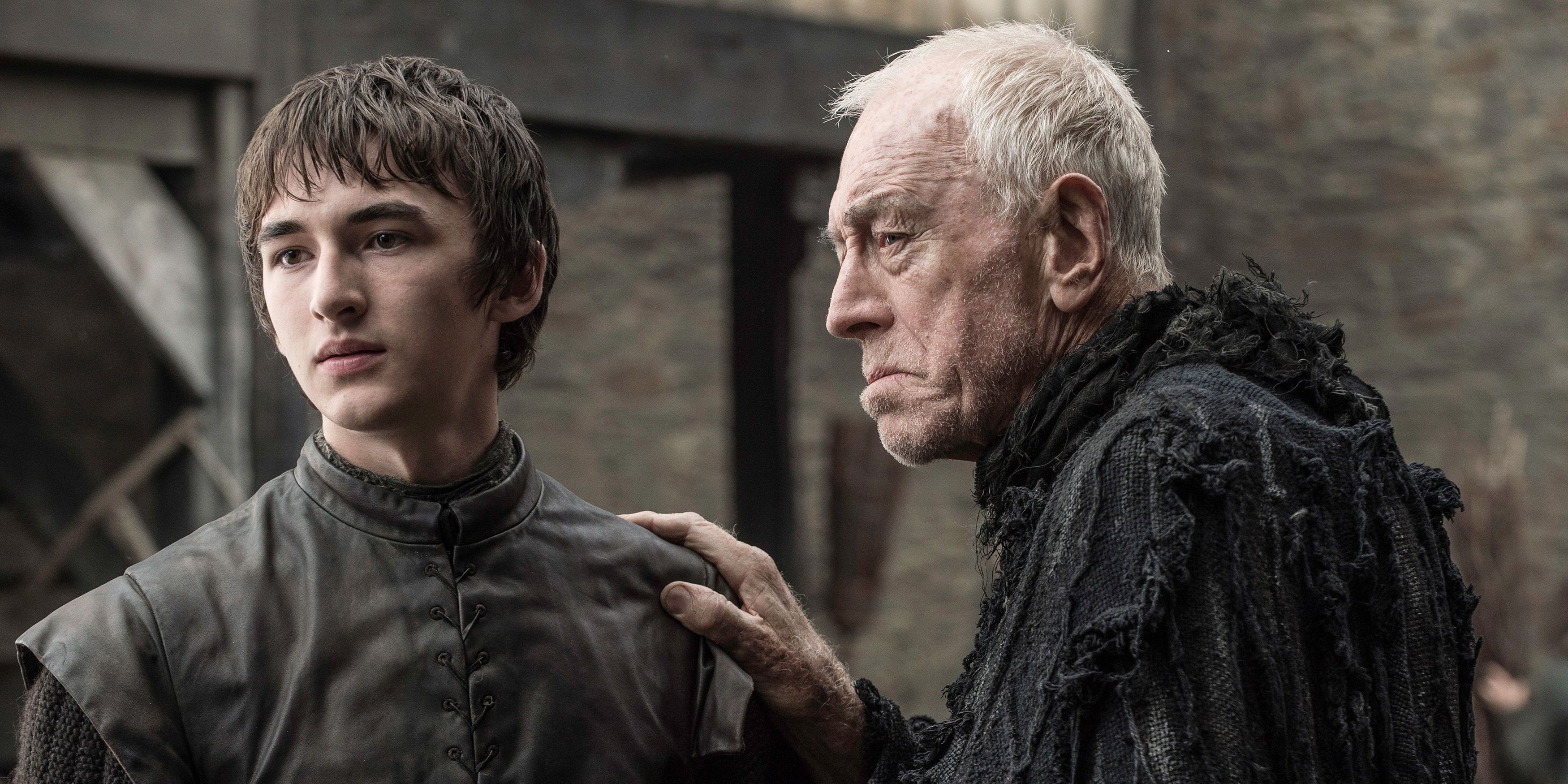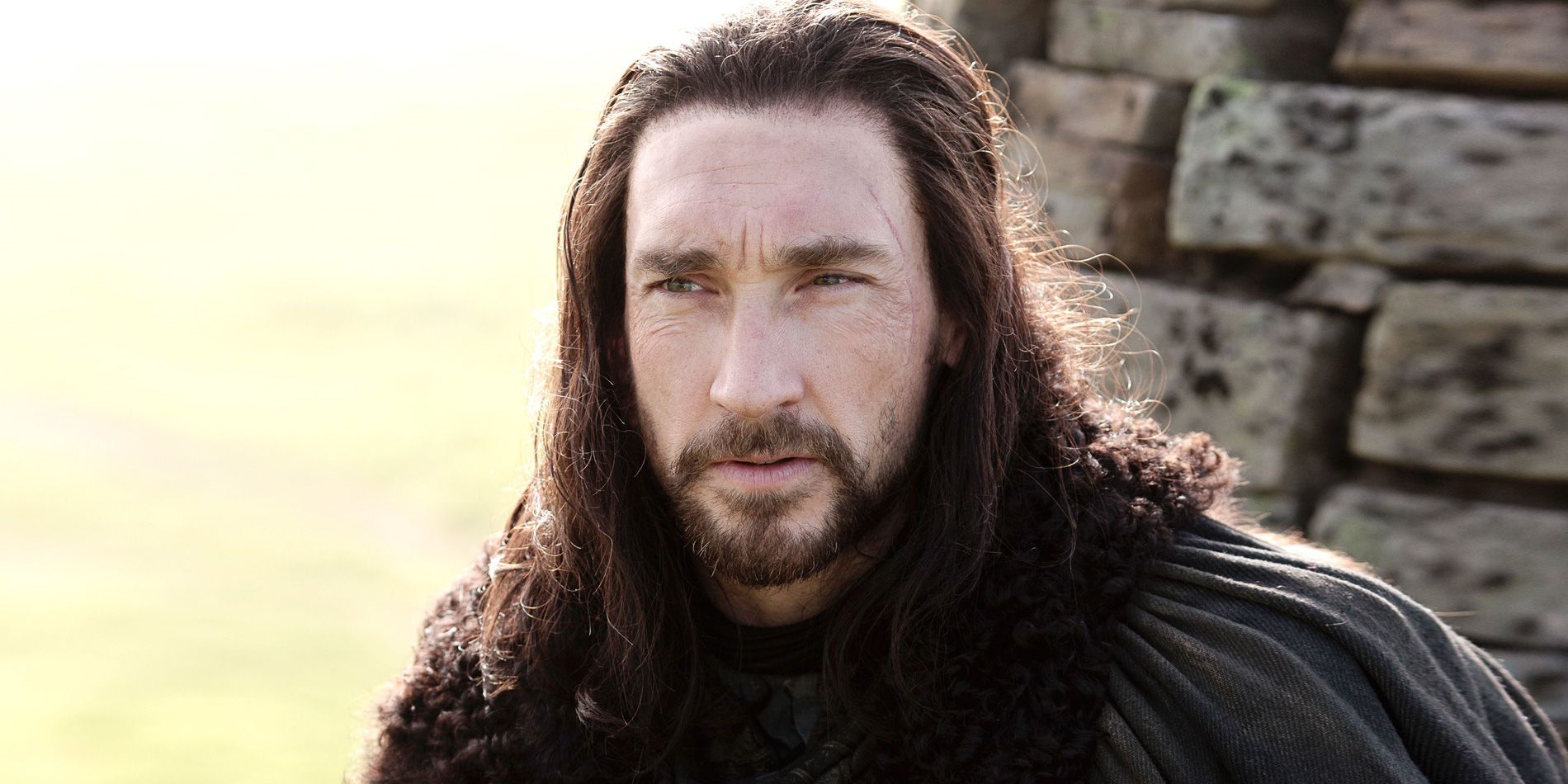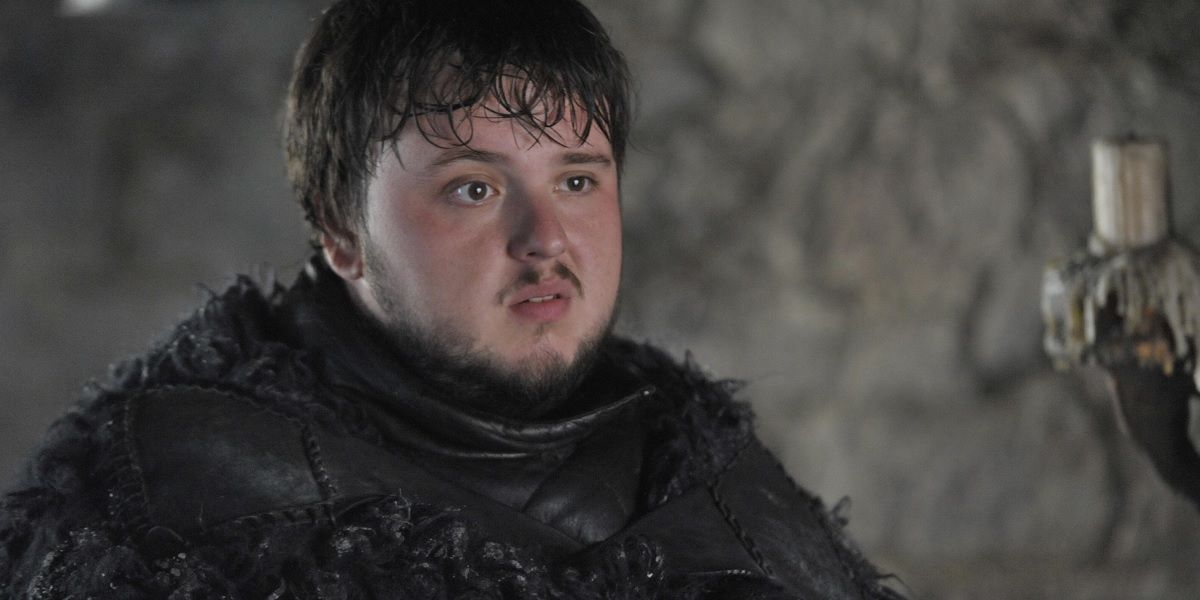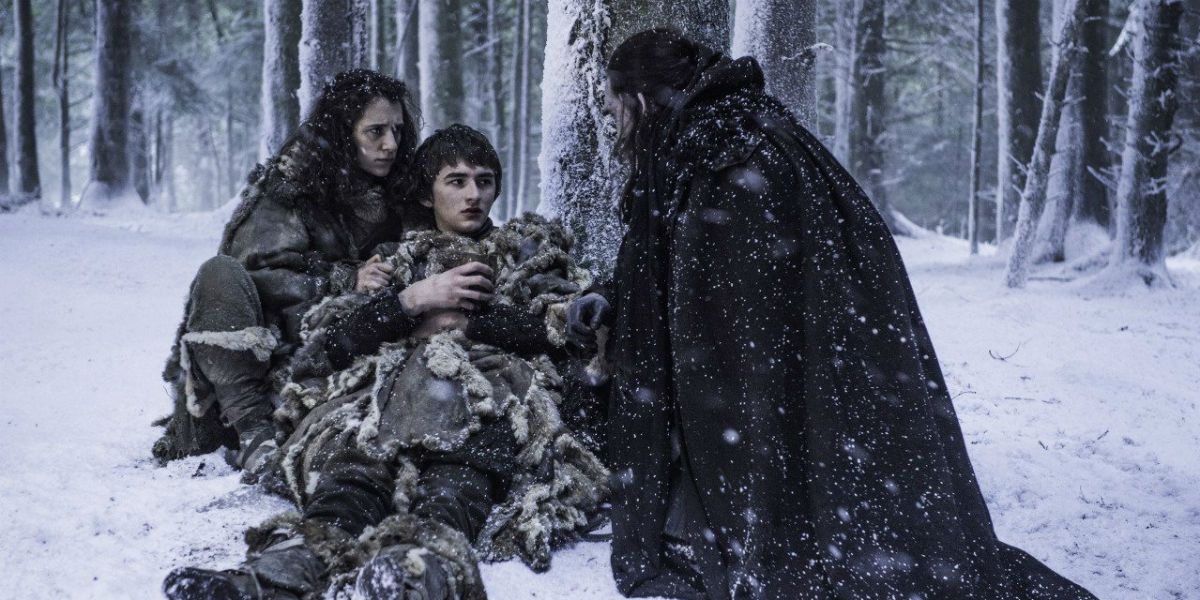Warning: SPOILERS for the Game of Thrones books & TV show ahead
-
The return of Uncle Benjen Stark (Joseph Mawle), a character who appeared for exactly three episodes before disappearing for some five years, is one of Game of Thrones’s biggest developments yet this season – which is saying quite a bit, given just how many twists there have already been this year.
But as with most things Thrones, the move comes as part adaptation, part refraction, and part original development – and also, just possibly, part future reveal from those two books in the Song of Ice and Fire series that author George R.R. Martin has yet to write. This makes the surprise appearance emblematic of the show as a whole, and untangling and exploring it a potential key to understanding showrunners David Benioff and D.B. Weiss’ approach to handling the very complicated process of telling this larger-than-life tale on the small screen.
For those who have never read the books, or those who need a reminder, here is a primer on Benjen Stark, a.k.a. Coldhands, in Game of Thrones.
Who is Coldhands?
In the third book, A Storm of Swords (whose equivalent in the television series would roughly be the end of the third season), Sam (John Bradley) and the wildling Gilly (Hannah Murray) flee from Craster’s Keep but are beset by wights, who are able to almost literally smell the life of Gilly’s newborn babe - a nice bit of foreshadowing to the fact that the White Walkers transform Craster’s (Robert Pugh) children into While Walkers, which hasn’t been explicitly revealed in the novels as of yet, but certainly has been hinted at. They are saved by the sudden intervention of a mysterious, hooded figure who is dressed like a long-misplaced member of the Night’s Watch – he even refers to Sam as “brother!” – and who rides a great big elk. A scarf hides his face, though nothing can conceal the fact that he’s not exactly alive: no breath steams the night’s air; his hands are “black and as cold as ice,” thanks to all the blood that has pooled and congealed there (a common description for the wights); and when Bran wargs into his direwolf, Summer, he smells only a carcass, not a living, breathing body.
What really makes the character that comes to be referred to as Coldhands stand out are the more magical touches. When the former crow escorts Sam and Gilly back to Castle Black – where he picks up his next escort, Bran Stark and his company of travelers – he is unable to pass through the Wall, thanks to the magic that has been woven within its icy depths that keeps the White Walkers at bay (though he does possess knowledge of a secret entrance that only a Night’s Watch member would have access to), which would seem to confirm his existence as a member of the soon-to-invade undead horde. On the other hand, however, he is almost always accompanied by a flock of ravens, which constantly fly off and return, seemingly carrying messages or acting as scouts for the path ahead.
Given such details – and given the fact that Coldhands’ eyes are black instead of the telltale bright blue – some book readers have been led to conclude that the enigmatic savior was a wight at one point, but he has somehow been broken of the Walkers’ spell and has instead become a vessel for the Three-Eyed Raven (Max von Sydow), just as Hodor (Kristian Nairn) was a human container for Bran. Since the grand puppetmaster (who was once known as Brynden Rivers in the source material and who was a notable component of the Tales of Dunk and Egg prequel novellas that are set some 100 years before the main story proper) knows that Bran will need to traverse some rather hostile territory in order to arrive at the northern sanctuary and begin his training, he nabs the only protector and guide able to withstand the Walkers’ presence – and who, along the way, would be able to help save the lives of Sam, Gilly, and little Sam (who remains unnamed in the books): other individuals who will undoubtedly have parts to play in the coming showdown between ice and fire.
Interestingly enough, despite all the evidence to the contrary – and the developments of “Blood of My Blood,” this week’s episode – George Martin has vehemently denied that Coldhands was, at one point, the long-missing Benjen Stark, even going so far as to privately tell his own editor, Anne Groell, as much; in the original manuscript for his fifth and most recent book, A Dance with Dragons, Groell asks in a hand-written message in the margin of the page: “Is this Benjen? I think it’s Benjen…” Right below it is Martin’s own handwritten response: “NO.”
Why the change?
Assuming that Martin isn’t lying publicly to his fanbase or privately to his editor, the question of why Weiss and Benioff changed this character’s identity to that of Benjen arises.
The first part of the answer is both revealing and, well, boring: this is how the two executive producers have always handled such scenes or storylines in the television format. Given the realities of television production (every actor on-screen costs money – doubly so if they are given lines of dialogue), there has been a consistent effort across the past six years to keep the number of characters involved in any given throughline as small as possible; given the realities of viewers’ consumption of visual narratives, the developments from one beat to the next are designed to be as streamlined as possible (without losing their essences, of course); and, finally, given the strict limitations of the format’s running time, scenes cannot linger on any one specific event or storyline for very long at all.
As such, when it comes time for the great, burnt castle of Harrenhal to move from Lannister to Stark control during the second and third seasons, only the main cast members of Arya Stark (Maisie Williams), Robb Stark (Richard Madden), and Tywin Lannister (Charles Dance) are involved (in the novels, Lord Roose Bolton (Michael McElhatton) is given command of the castle while Robb moves his military campaign westward), and the Lannisters end up departing the Harrenhal off-screen and in between seasons (on the page, there is an entire sellsword company that ends up betraying their Lannister contractors for greater fame and glory with the King in the North, with Arya and Jaqen H’ghar (Tom Wlaschiha) playing an instrumental role in the betrayal). Phasing out what has proven to be in the novels a comparatively insignificant part (Coldhands) and replacing it with an equally-unknown-but-previously-established character (Benjen Stark) was a no-brainer for the showrunners – especially considering the level of crossover between the two figures already.
But there’s another reason for the switch-up - one that touches upon a more fundamental-yet-more-subtle divergence between A Song of Ice and Fire and Game of Thrones: magic – or, rather, the lack thereof in the adaptation. In the source material, magic is a small-but-ever-more-present entity in the lands of Westeros and Essos: one that has nearly died out after the last of the dragons perished some 150 years previously but which has seen a resurgence following the birth of Daenerys Targaryen’s (Emilia Clarke) three new dragon babies at the conclusion of the first season. Little by little, the background element has grown in both its number of occurrences and impact upon the story – and Coldhands ends up being a small-but-notable conduit to this changing background reality.
Near the end of A Storm of Swords, Coldhands reveals the Black Gate to Sam and Gilly, a secret entranceway which is fashioned almost entirely out of magic. Seemingly built by the original architects of the Wall itself (this is probably the children of the forest, or their First Men apprentices), it is fashioned out of weirwood (that’s the same material, of course, as the Three-Eyed Raven’s perch) and sculpted into the likeness of a face – one that talks. “Who are you?” it asks all who approach it, and should a sworn brother of the Night’s Watch repeat his vows, it opens its mouth wide, forming the doorway. It emits a soft white glow – like moonlight – which seems to not cast any shadows, and it even produces water droplets that are “as warm and salty as a tear.” It’s hard to get more fantastical than that.
Even though Game of Thrones is a fantasy series, it has tried hard to downplay these more outlandish elements, seeking instead to present a more “believable” picture to those viewers who, perhaps, are more inclined to historical dramas than hard fantasy tales (the little matter of money also rears its ugly head here, with many of these magical occurrences costing a great deal to realize as visual effects). Thus, the Black Gate in the show is a simple, old-fashioned doorway, not unlike the main gate we see at Castle Black, which was destroyed by the wildlings’ attack in the penultimate fourth season episode, “Watchers on the Wall.” Thus, even when the undead Benjen shows up, he is more rooted in the everyday world, riding a standard horse instead of the unusual elk, and without his attendant flock of ravens present.
What path, the future?
What may be more interesting is the common ground the two depictions of the character share instead of their differences, and what this overlap may mean moving forward to the resolution of both stories. Benioff and Weiss come up with a very interesting explanation for how Benjen became the sentient wight that he is: while in the process of dying and being raised again as one of the White Walkers’ ice zombies, a child of the forest came across him and disrupted the resurrection process by inserting a dragonglass blade into his chest, leaving him halfway between life and death.
Rather than being a vessel controlled by the Three-Eyed Raven, this could very well be Coldhands’ origin in the books, as well (which would explain why some of his cadre of ravens are constantly being dispatched as messengers, presumably to Brynden Rivers himself). And even if he ends up being revealed to have formerly been some random, nameless brother of the Night’s Watch instead of the long-lost Benjen Stark, the methodology of halting the Walkers’ transformation process can still prove to be a major plot point in the books, as the Westerosi will need every last defense they can get their hands on once the Wall is (presumably) breached and all winter hell breaks loose in the Seven Kingdoms.
There is actually one last divergence between the two media, however, that might possibly suggest that Martin won’t end up going this route at all in his own telling: in the third season finale (“Mhysa”), when Bran and his fellowship meet up with Sam and Gilly, the latter gives the former his remaining supply of dragonglass, which was discovered during the previous season at the Fist of the First Men (“The Prince of Winterfell,” episode 208). Assuming that Bran and Meera Reed (Ellie Kendrick) still have the cache – or that Benjen will be able to head back to the cave in order to retrieve it for them – this could prove to play an instrumental part in creating future sentient wights, something that Martin hasn’t at all hinted at in his own work.
-
Which version of Coldhands do you think better serves the narrative? How do you think the story will ultimately resolve itself? Let us know in the comments.
Game of Thrones continues next Sunday with "The Broken Man" @9pm on HBO.

